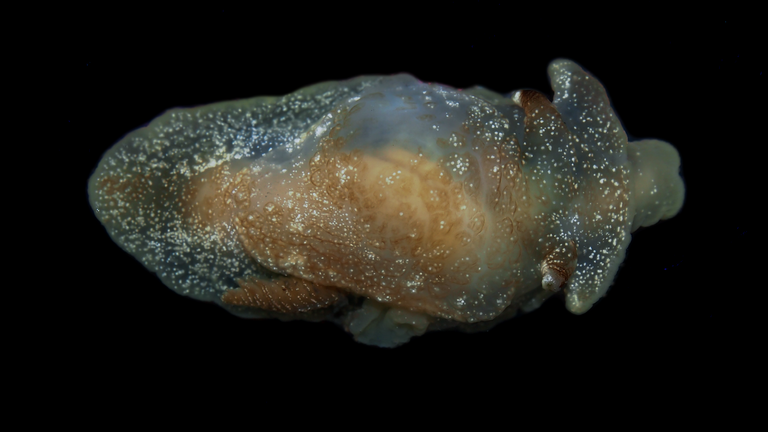A new species of sea creature has been discovered in UK waters.
Previously, there were only thought to be two species of the pleurobranchid genus of sea slug – none of whom had ever been seen in UK waters before now.
But scientists from the Centre for Environmental Fisheries and Aquaculture Science (CEFAS) working in waters off the southwest of England discovered a third species.
It has been named Pleurobranchaea britannica, and it was found during expeditions carried out in 2018 and 2019 in the western Channel and Celtic Sea by CEFAS and the Instituto Espanol de Oceanografía.
Fourteen specimens were discovered of the new species, which measures between two and five centimetres and is a type of side-gill sea slug.
While other species of sea slugs are common, such a variation is more frequently found in warmer waters in the Mediterranean Sea. Scientists think it could have moved so far north due to the ongoing effects of climate change.
At first researchers thought they had discovered an existing genus, before further examination showed it was a standalone species.
Ross Bullimore, a Marine Ecologist at CEFAS who made the discovery, said: “It only took a brief inspection of two specimens to be confident that we had stumbled upon a species of Pleurobranchaea. This was thrilling because no other species from this genus had been documented in UK waters, or even this far north.
“After close collaboration with the University of Cadiz, who carried out a more thorough assessment, we were blown away to discover that we had identified a third, new species. There is often an assumption that we know everything there is to know about species found in UK waters, but this just goes to show that there is still so much to learn in our own backyard.”
Dr. Juan Lucas Cervera Currado, full professor of the Department of Biology at the University of Cadiz, Spain, said: “When Cefas scientists contacted me and told me that they had collected individuals belonging to the sea slug genus Pleurobranchaea, but whose specific identity was not clear, I was really surprised.
“Firstly, because species from this genus have never been found in the British Isles, and secondly because the possibility of having found a new species of this genus in European waters was really exciting.”
He went on to add that the new species could be spread across the west coast of France and northern coasts of Spain and Portugal.

